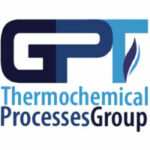SOBRE MÍ
Currently at Universidad Pública de Navarra,
PUBLICATIONS
2023
Villasana, Yanet; Armenise, Sabino; Ábrego, Javier; Atienza-Martínez, María; Hablich, Karina; Bimbela, Fernando; Cornejo, Alfonso; Gandía, Luis M.
Exploring a Low-Cost Valorization Route for Amazonian Cocoa Pod Husks through Thermochemical and Catalytic Upgrading of Pyrolysis Vapors Artículo de revista
En: ACS Omega, vol. 8, no 40, pp. 37610–37621, 2023, (Publisher: American Chemical Society).
@article{villasana_exploring_2023,
title = {Exploring a Low-Cost Valorization Route for Amazonian Cocoa Pod Husks through Thermochemical and Catalytic Upgrading of Pyrolysis Vapors},
author = {Yanet Villasana and Sabino Armenise and Javier Ábrego and María Atienza-Martínez and Karina Hablich and Fernando Bimbela and Alfonso Cornejo and Luis M. Gandía},
url = {https://doi.org/10.1021/acsomega.3c06672},
doi = {10.1021/acsomega.3c06672},
year = {2023},
date = {2023-10-01},
urldate = {2023-10-01},
journal = {ACS Omega},
volume = {8},
number = {40},
pages = {37610–37621},
abstract = {Ecuador as an international leader in the production of cocoa beans produced more than 300 000 tons in 2021; hence, the management and valorization of the 2 MM tons of waste generated annually by this industry have a strategic and socioeconomic value. Consequently, appropriate technologies to avoid environmental problems and promote sustainable development and the bioeconomy, especially considering that this is a megadiverse country, are of the utmost relevance. For this reason, we explored a low-cost pyrolysis route for valorizing cocoa pod husks from Ecuador’s Amazonian region, aiming at producing pyrolysis liquids (bio-oil), biochar, and gas as an alternative chemical source from cocoa residues in the absence of hydrogen. Downstream catalytic processing of hot pyrolysis vapors using Mo- and/or Ni-based catalysts and standalone γ-Al2O3 was applied for obtaining upgraded bio-oils in a laboratory-scale fixed bed reactor, at 500 °C in a N2 atmosphere. As a result, bimetallic catalysts increased the bio-oil aqueous phase yield by 6.6%, at the expense of the organic phase due to cracking reactions according to nuclear magnetic resonance (NMR) and gas chromatography–mass spectrometry (GC–MS) results. Overall product yield remained constant, in comparison to pyrolysis without any downstream catalytic treatment (bio-oil ∼39.0–40.0 wt % and permanent gases 24.6–26.6 wt %). Ex situ reduced and passivated MoNi/γ-Al2O3 led to the lowest organic phase and highest aqueous phase yields. The product distribution between the two liquid phases was also modified by the catalytic upgrading experiments carried out, according to heteronuclear single-quantum correlation (HSQC), total correlation spectroscopy (TOCSY), and NMR analyses. The detailed composition distribution reported here shows the chemical production potential of this residue and serves as a starting point for subsequent valorizing technologies and/or processes in the food and nonfood industry beneficiating society, environment, economy, and research.},
note = {Publisher: American Chemical Society},
keywords = {},
pubstate = {published},
tppubtype = {article}
}
2021
Moreira, Rui; Bimbela, Fernando; Gandía, Luis M.; Ferreira, Abel; Sánchez, José Luis; Portugal, António
Oxidative steam reforming of glycerol. A review Artículo de revista
En: Renewable and Sustainable Energy Reviews, vol. 148, 2021, ISSN: 18790690.
@article{Moreira2021,
title = {Oxidative steam reforming of glycerol. A review},
author = {Rui Moreira and Fernando Bimbela and Luis M. Gandía and Abel Ferreira and José Luis Sánchez and António Portugal},
doi = {10.1016/j.rser.2021.111299},
issn = {18790690},
year = {2021},
date = {2021-01-01},
urldate = {2021-01-01},
journal = {Renewable and Sustainable Energy Reviews},
volume = {148},
abstract = {This review article presents the state-of-the-art on the catalytic oxidative steam reforming (OSR) of glycerol to produce syngas. Concerning the different technologies proposed for the catalytic OSR of glycerol, the following key points can be highlighted: (1) the robustness is much higher than other reforming technologies, (2) several catalysts can work with low deactivation, some of which can recover almost full activity by suitable regeneration, (3) syngas production by catalytic OSR of glycerin is higher than with concurrent technologies, (4) their scaling-up remains an unrealized task, (5) the thermodynamics of the process has been sufficiently covered in the literature, (6) there is a significant lack of kinetic and mechanistic studies that could help gaining deeper insight on the process, (7) novel concepts and reactor designs must be proposed for their development at larger scales, (8) new catalyst formulations must be developed for attaining higher resistance against oxidation and (9) process intensification could help developing them at larger scales.},
keywords = {},
pubstate = {published},
tppubtype = {article}
}
Moreira, Rui; Bimbela, Fernando; Gil-Lalaguna, Noemí; Sánchez, José Luis; Portugal, António
Clean syngas production by gasification of lignocellulosic char: State of the art and future prospects Artículo de revista
En: Journal of Industrial and Engineering Chemistry, vol. 101, pp. 1–20, 2021, ISSN: 22345957.
@article{Moreira2021b,
title = {Clean syngas production by gasification of lignocellulosic char: State of the art and future prospects},
author = {Rui Moreira and Fernando Bimbela and Noemí Gil-Lalaguna and José Luis Sánchez and António Portugal},
doi = {10.1016/j.jiec.2021.05.040},
issn = {22345957},
year = {2021},
date = {2021-01-01},
journal = {Journal of Industrial and Engineering Chemistry},
volume = {101},
pages = {1--20},
abstract = {Using lignocellulosic char instead of the original biomass avoids the need for costly cleaning and conditioning stages of the producer gasification gas. However, lignocellulosic char gasification has been less extensively studied than gasification of lignocellulosic biomass, and a review of published works on this topic was missing. In this review the present status of char gasification technologies and their future prospects are critically discussed, including possible research opportunities. To date, most studies on char gasification have been performed in thermogravimetric analyzers (TGA) or TGA-like experimental setups. The major setback of TGA and TGA-like equipment is that they do not mimic the actual reaction conditions occurring in gasification reactors, which impedes a direct extrapolation of the findings during the scale-up of different gasification technologies. For this reason, in this literature review focus was put on studies undertaken in industrially relevant reactors, both in batch and continuous configurations. Overall, char gasification can be deemed a valid alternative for clean syngas production, contributing to an integral valorization of lignocellulosic residues within different biorefinery schemes. Of these, process intensification by microwave heating offers interesting opportunities for research and scaling-up, though efforts must be directed toward developing continuous microwave-assisted gasification processes.},
keywords = {},
pubstate = {published},
tppubtype = {article}
}
2019
Moreira, Rui; Moral, Ainara; Bimbela, Fernando; Portugal, António; Ferreira, Abel; Sánchez, José Luis; Gandía, Luis M
Syngas production via catalytic oxidative steam reforming of glycerol using a Co/Al coprecipitated catalyst and different bed fillers Artículo de revista
En: Fuel Processing Technology, vol. 189, pp. 120–133, 2019, ISSN: 03783820.
@article{Moreira2019,
title = {Syngas production via catalytic oxidative steam reforming of glycerol using a Co/Al coprecipitated catalyst and different bed fillers},
author = {Rui Moreira and Ainara Moral and Fernando Bimbela and António Portugal and Abel Ferreira and José Luis Sánchez and Luis M Gandía},
doi = {10.1016/j.fuproc.2019.02.014},
issn = {03783820},
year = {2019},
date = {2019-06-01},
journal = {Fuel Processing Technology},
volume = {189},
pages = {120--133},
publisher = {Elsevier B.V.},
abstract = {Syngas production has been investigated via oxidative steam reforming of concentrated glycerol aqueous solutions (Steam-to-Carbon molar ratio = 4 and 6 vol% O2 in N2). Results obtained using different (bulk) bed materials (SiO2, SiC and $gamma$-Al2O3) were compared with results achieved while using a cobalt aluminate catalyst prepared by coprecipitation dispersed in each of those same bed fillers. The effects on conversion and gas production of the filler bed material, activation temperature (1023 K, 1073 K and 1123 K) and reaction temperature (823 K, 923 K and 1023 K) were studied, as well as the catalyst reuse (at 1023 K) to assess its performance after regeneration. High glycerol conversion levels (above 80%) were attained at 1023 K without the catalyst. The main gaseous products were H2, CO, CO2 and CH4. Using a bed of commercial $gamma$-Al2O3, around 90% of the C fed into the reactor could be converted into gaseous products, yielding syngas with H2/CO molar ratio close to 1. In what concerns the use of the Co aluminate catalyst in the oxidative steam reforming of glycerol, very high overall conversion levels (above 90% in all cases) were achieved, as well as significantly higher H2/CO molar ratios (within the 2.0–2.5 range). The Co catalyst helped in effectively converting approximately 90% of the glycerol in the feed into product gases at temperatures as low as 823 K, and up to 94% of overall C conversion to gas could be achieved at 1023 K. Higher activation or reforming reaction temperatures did not improve the catalyst performance, the glycerol conversion or gas production. The catalyst could be effectively used during 20 h on stream in four consecutive reaction/regeneration cycles. Catalyst deactivation by encapsulating carbon caused drastic changes in the catalyst structure, which evolved into a core-shell configuration when deactivated. Upon regeneration by air oxidation and subsequent activation, the catalyst recovered its original structure and initial activity. These new insights allowed to propose the use of a pre-reforming step over relatively inexpensive bulk bed materials, where thermal decomposition of glycerol processes dominate followed by the catalytic oxidative steam reforming, to obtain high syngas production at moderate conditions (823 K).},
keywords = {},
pubstate = {published},
tppubtype = {article}
}
2018
Moreira, Rui; Vaz, Rui; Portugal, António; Gil-Lalaguna, Noemí; Sánchez, José Luis; Bimbela, Fernando
Gasification of Charcoal in Air, Oxygen, and Steam Mixtures over a $gamma$-Al2O3 Fluidized Bed Artículo de revista
En: Energy and Fuels, vol. 32, no 1, pp. 406–415, 2018, ISSN: 15205029.
@article{Moreira2018,
title = {Gasification of Charcoal in Air, Oxygen, and Steam Mixtures over a $gamma$-Al2O3 Fluidized Bed},
author = {Rui Moreira and Rui Vaz and António Portugal and Noemí Gil-Lalaguna and José Luis Sánchez and Fernando Bimbela},
url = {https://pubs.acs.org/sharingguidelines},
doi = {10.1021/acs.energyfuels.7b02257},
issn = {15205029},
year = {2018},
date = {2018-01-01},
journal = {Energy and Fuels},
volume = {32},
number = {1},
pages = {406--415},
publisher = {American Chemical Society},
abstract = {Charcoal was gasified using air and oxygen as well as with mixtures of oxygen and steam, aiming to produce a gas stream with high hydrogen content. The effects of the equivalence ratio (ER) and steam-to-carbon ratio (S/C) on carbon conversion, producer gas yield, gas heating value, and composition as well as on the apparent energy efficiency (AEE) of the process were studied. The gasification experiments were performed in a laboratory-scale fluidized bed rig working at 1173 K and atmospheric pressure and using $gamma$-Al2O3 as bed material. Results showed that, on a N2-free basis, the composition of the producer gas obtained by gasification with air and pure oxygen were comparable when using the same ER. Furthermore, carbon fraction converted into gas improved when ER was increased from 0.25 up to 0.35, as well as when the S/C was increased to 0.625. The highest producer gas yield was obtained using ER = 0.35 and S/C = 0.625, while the highest hydrogen concentration in the produced gas was achieved using ER = 0.25 and S/C = 0.625. The highest hydrogen yield (0.412 N m3/kg charcoal) and the highest AEE (33.43%) were achieved by using S/C = 0.625 and ER = 0.3 (oxygen). The autothermal gasification of the charcoal was possible in the experimental rig used in this work by selecting ER = 0.3 and S/C = 0.5, allowing the production of a gas with a heating value of 8.3 MJ/Nm3 while reducing the carbon conversion into gas to 49.4 wt %.},
keywords = {},
pubstate = {published},
tppubtype = {article}
}


